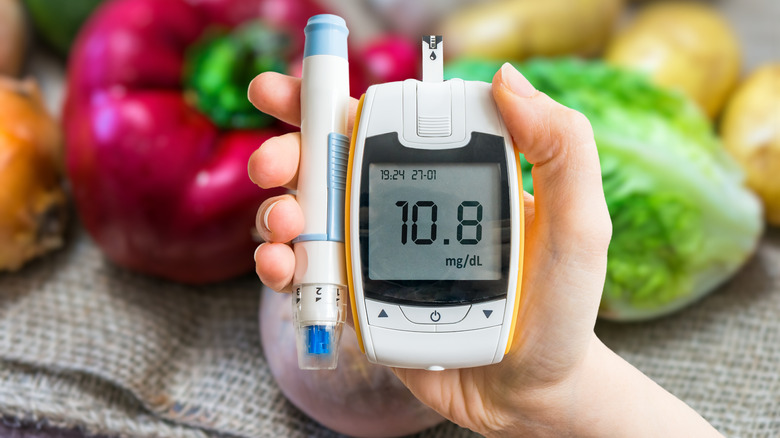What Causes Gestational Diabetes?
Gestational diabetes is a type of diabetes that can take place during pregnancy, explains the CDC. It affects anywhere from 2% to 10% of pregnancies per year in the United States alone and is marked by an inability to produce enough insulin. Alternatively, it also makes the cells of the body more resistant to the insulin that is already in production, leading to an increase in the need for insulin. Although the condition typically passes after birth, in some cases it continues and becomes classified as Type 2 diabetes.
A pregnant individual can opt out of testing, but most prenatal care regimens conduct a screening for gestational diabetes between 24 and 28 weeks unless otherwise indicated by their personal health history, as per the National Institute of Diabetes and Digestive and Kidney Diseases (NIDDK). The first screening test, called the glucose challenge test, is less intensive and involves drinking a sugary drink and then having glucose levels measured with a blood draw. The second test, known as the oral glucose tolerance test (OGTT), involves the same drink but requires multiple blood draws over the course of three hours.
It's important to screen for and diagnose gestational diabetes as the condition can have implications for the health of the developing baby, namely leading to excessive weight, breathing problems, and the potential for the baby to develop Type 2 diabetes down the road (per NIDDK). But what causes gestational diabetes and how can you know if you're at risk?
You may develop gestational diabetes for certain reasons
Unfortunately, experts haven't yet been able to determine with certainty why some pregnant individuals with the same risk factors go on to develop gestational diabetes, while others make it through pregnancy diabetes-free (via Mayo Clinic). However, certain factors do make it more likely that one will receive a diagnosis during pregnancy. These include starting the pregnancy overweight or obese, living a fairly sedentary lifestyle, having a family history of diabetes, previous diagnosis of prediabetes or gestational diabetes, and holding a diagnosis of polycystic ovary syndrome. Keep in mind, none of these individually or together guarantee the development of gestational diabetes, but can greatly increase the risk.
If you already know that you are at risk for developing gestational diabetes, there are some symptoms you can look out for to ensure a timely diagnosis. The caveat is that the symptoms that do exist also go hand in hand with pregnancy, explains WebMD. That being said, you may notice you're hungrier or thirstier than normal or urinate more often. Whether they're typical pregnancy symptoms or signs of gestational diabetes, it's always worth mentioning any changes you notice to your doctor during routine visits. The good news is that there are ways to manage gestational diabetes if you end up receiving a diagnosis.
How to manage gestational diabetes
It's crucial to receive immediate treatment as soon as gestational diabetes is diagnosed to ensure both the pregnant individual and the developing baby don't experience any health issues (via WebMD). For starters, a gestational diabetes diagnosis will require blood sugar tests multiple times a day. Therefore, the American Diabetes Association has set forth blood sugar guidelines for pregnancy, including a maximum concentration of 95 mg/dl before eating, 140 mg/dl one hour immediately following a meal, and 120 mg/dl two hours after eating. To keep these levels within normal guidelines, it may be necessary to incorporate insulin injections into the daily routine.
It will also be important to adopt a specific diet to help the body manage blood sugar levels, as per the CDC. The meal plan should focus on non-starchy vegetables, fiber-rich foods, a reduction of sugar, and a general shift toward whole foods rather than processed ones. While a nutritionist can help you define a meal plan for your specific needs, the general rule of thumb is to make sure half your plate consists of vegetables, a quarter of protein, and the final quarter of carbohydrates.
In a 2015 review published in the World Journal of Diabetes, researchers wrote that exercise is yet one more way to improve outcomes when a pregnant individual is diagnosed with gestational diabetes. The recommendation is to aim for between half an hour and a full hour of moderate-intensity exercise at least three times a week.



